Gallery: Scanning Mummies for Heart Disease
Scanning Hatiay

Egyptologist Gomaa Abdel-maksoud prepares a mummy for a CT scan. The researchers were looking for evidence of arterial disease in the mummies. This mummy, Hatiay, who lived between 1550 and 1295 BC, had extensive vascular disease.
Hatiey scan
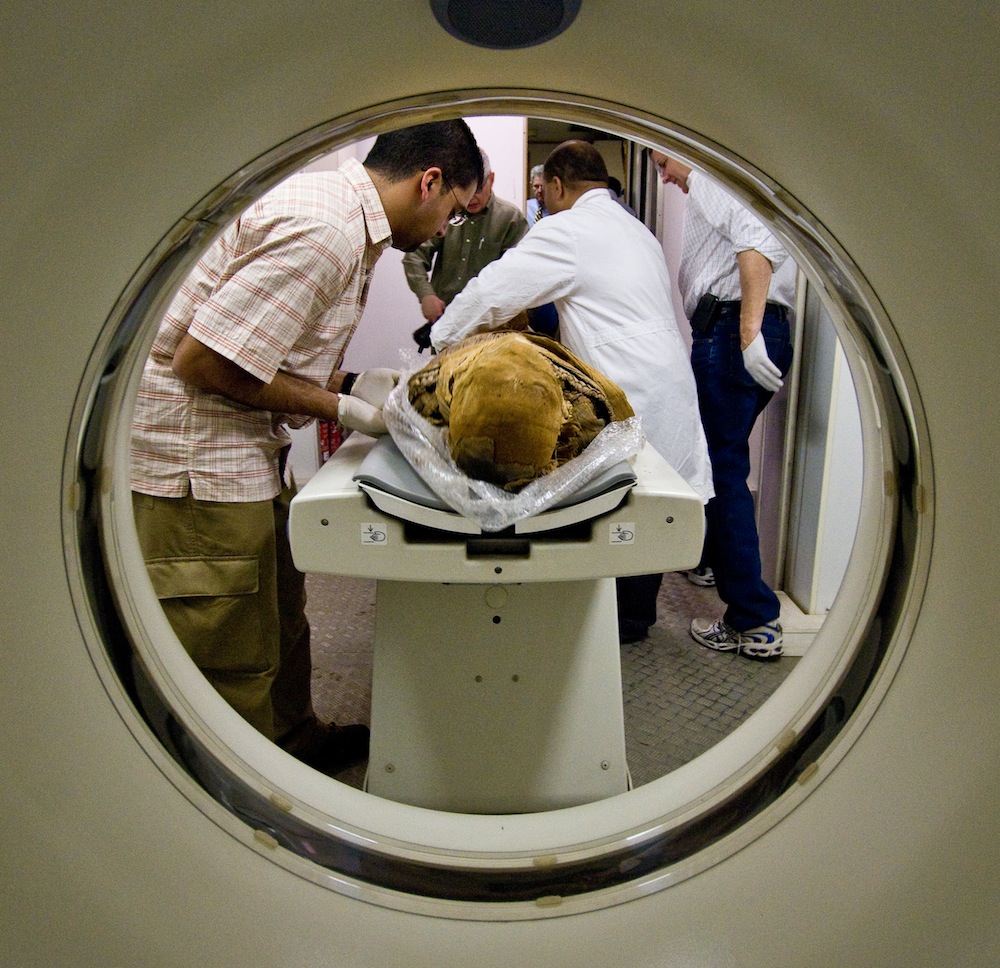
Researchers prepare the mummy Hatiey for a CT scan.
Maiherpri scan
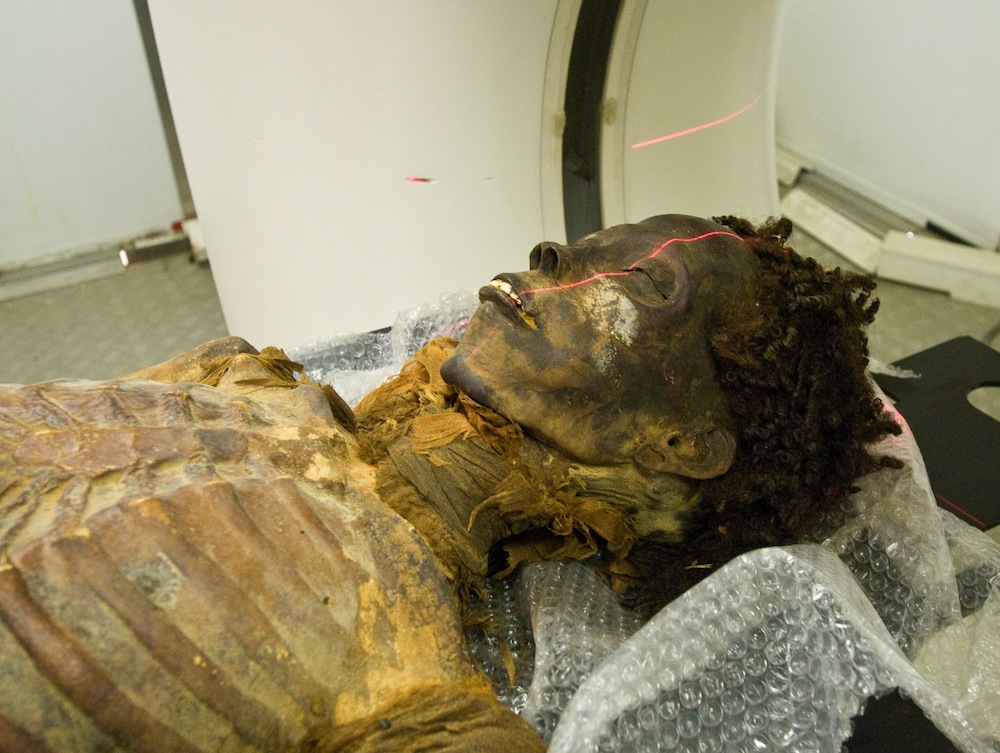
The mummy Maiherpri undergoes scanning.
Maiherpri in sarcophagus
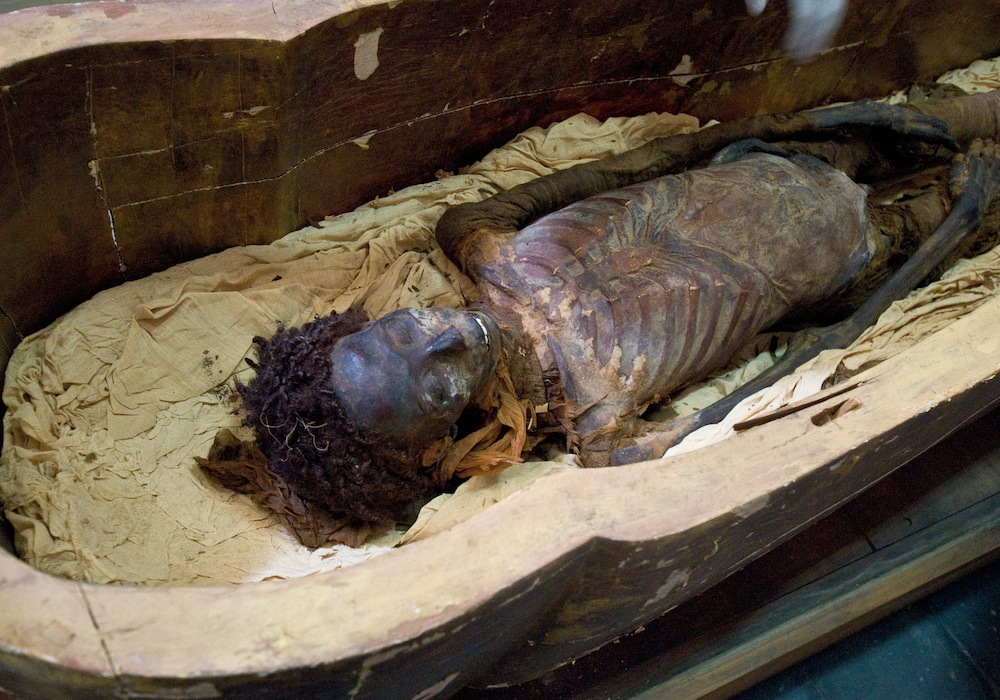
The mummy Maiherpri returned to the sarcophagus after scanning. All of the mummies reside at the Egyptian Museum in Cairo.
Maiherpri's feet
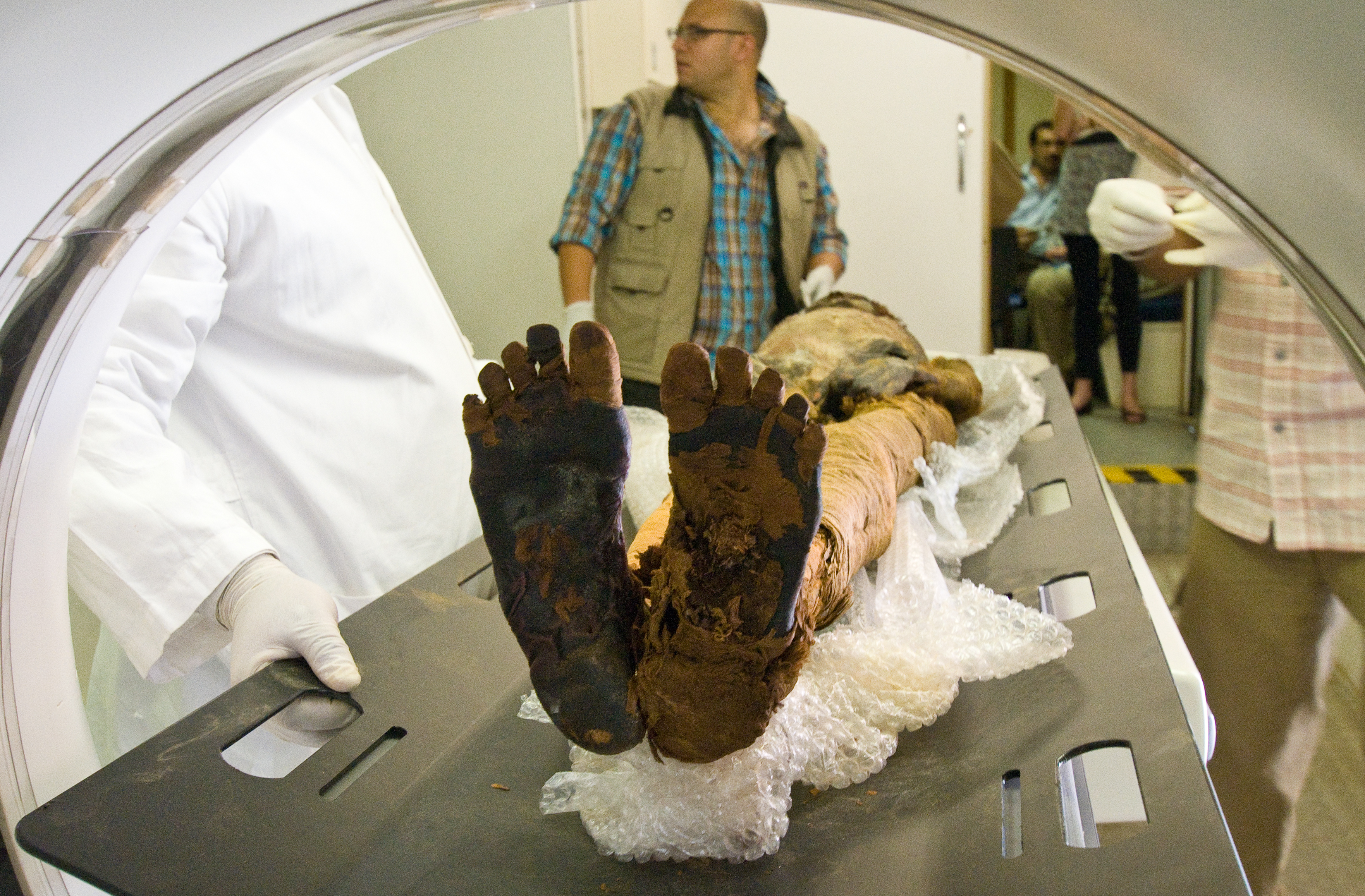
The individually wrapped toes of the mummy Maiherpri. Maiherpri lived between 1550 and 1295 BC.
Unknown mummy
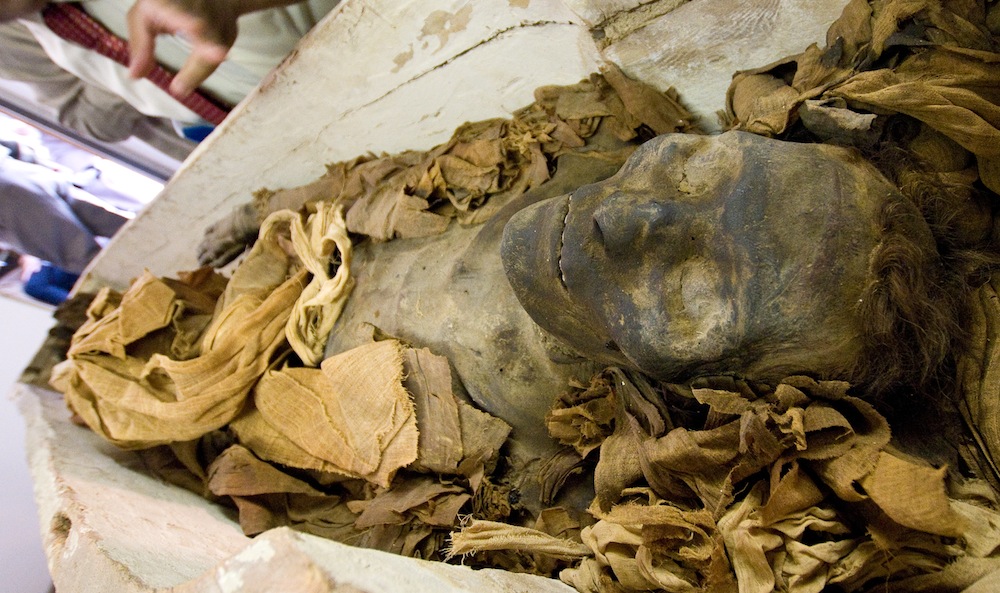
An unknown mummy is prepped for the scanner.
Mummy hand

The hand and legs of an unknown mummy.
Get the world’s most fascinating discoveries delivered straight to your inbox.
Mummy Djeher

Some mummies, like Djeher, who lived between 304 BC and 30 BC, were scanned still in their coffins.
Djeher's scan

The ancient Egyptian mummy Djeher as imaged with a CT scanner. Djeher was found to have heart artery and other vascular disease. Djeher lived between 304 and 30 BC. Another mummy with coronary artery disease, Princess Ahmose-Meryet-Amon, lived between 1580 and 1550 BC and is the oldest known case of human heart disease.

Stephanie Pappas is a contributing writer for Live Science, covering topics ranging from geoscience to archaeology to the human brain and behavior. She was previously a senior writer for Live Science but is now a freelancer based in Denver, Colorado, and regularly contributes to Scientific American and The Monitor, the monthly magazine of the American Psychological Association. Stephanie received a bachelor's degree in psychology from the University of South Carolina and a graduate certificate in science communication from the University of California, Santa Cruz.


